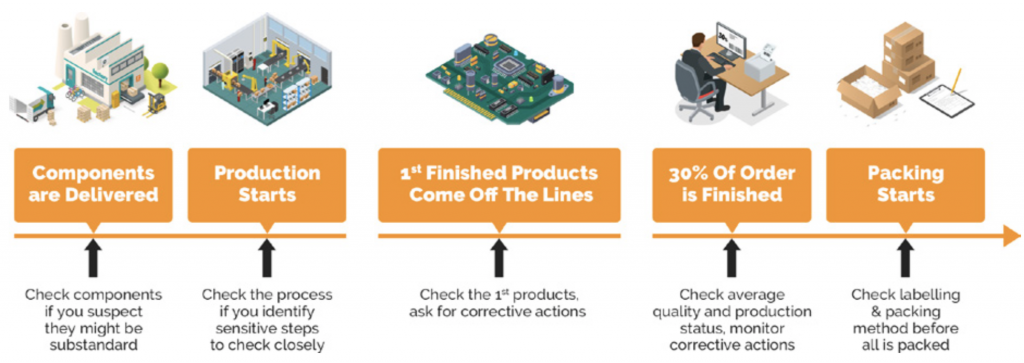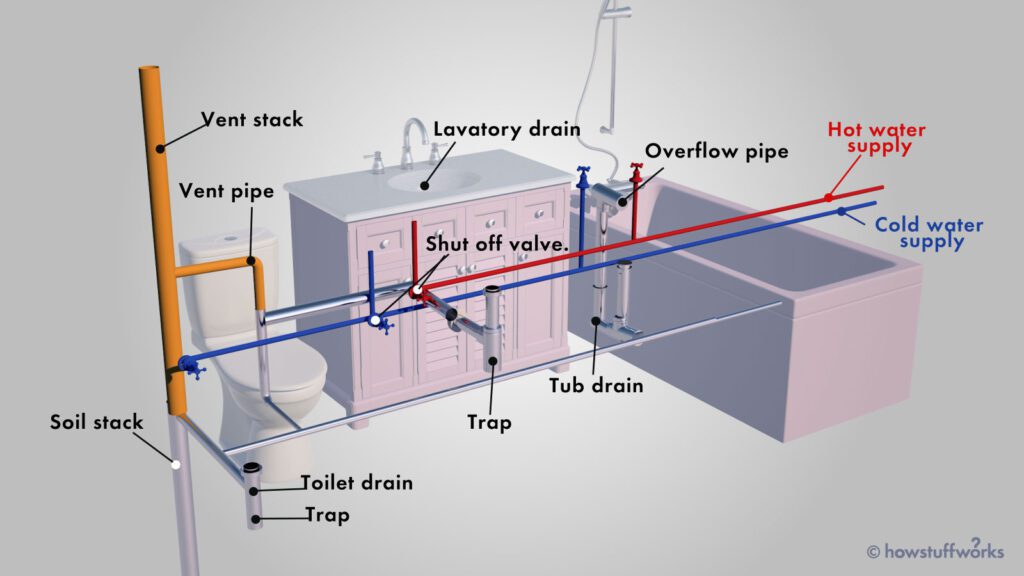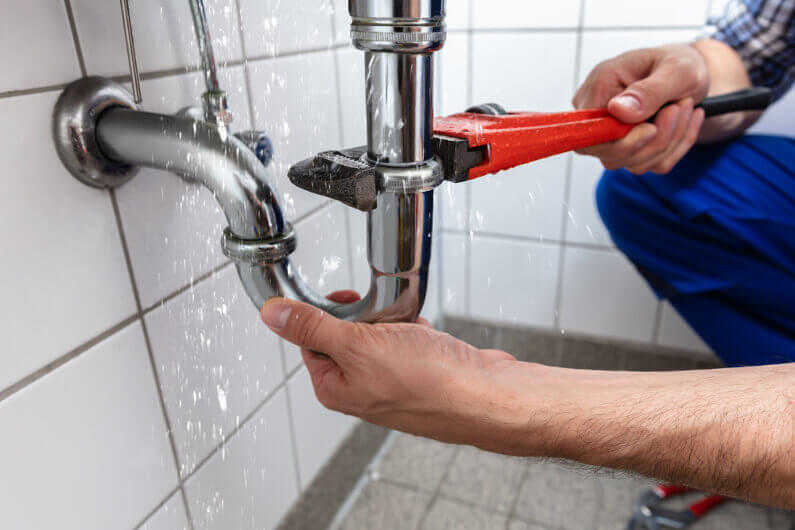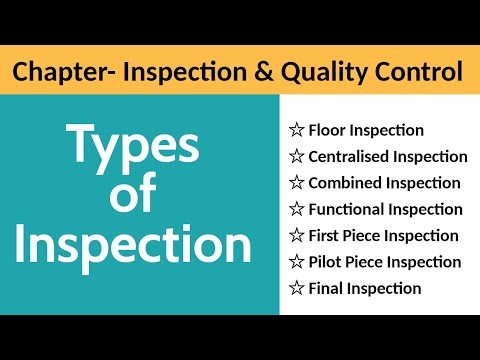In this article, we will explore the various stages of inspection that are essential in ensuring quality control and safety in a wide range of industries. From initial planning and preparation to detailed examinations and final reports, each stage plays a crucial role in identifying defects, ensuring compliance, and maintaining high standards. Let’s take a closer look at the fascinating process of inspection and its importance in maintaining quality and safety standards.


Pre-Inspection Stage
Identification of inspection requirements
In this stage, the first step is to identify the specific requirements for the inspection. This involves understanding the purpose of the inspection and what areas or aspects of the property need to be assessed. For example, if the inspection is for a residential property, the requirements may include assessing the overall condition of the house, checking for any potential safety hazards, and ensuring compliance with building codes and regulations.
Preparation of inspection checklist
Once the inspection requirements have been identified, the next step is to prepare an inspection checklist. This checklist serves as a guide during the inspection process and ensures that all necessary areas and aspects are thoroughly assessed. The checklist typically includes items such as the condition of the exterior, interior features, electrical systems, plumbing functionality, structural integrity, safety equipment, and compliance with environmental regulations.
Gathering of necessary documentation
Before the inspection takes place, it is important to gather all the necessary documentation related to the property. This may include building plans, permits, maintenance records, service contracts, and any other relevant documents. These documents provide valuable information about the property’s history, maintenance, and any previous repairs or improvements that have been made. Gathering this documentation beforehand ensures that the inspector has all the necessary information to conduct a thorough inspection.
Initial Inspection Stage
Introduction to the inspector
At the beginning of the inspection, the inspector will introduce themselves to the client or property owner. This introduction helps establish a friendly and professional rapport between the inspector and the client, fostering open communication throughout the inspection process. It is essential to establish trust and make the client feel comfortable with the inspector’s presence.
Overview of inspection process
After the introduction, the inspector will provide an overview of the inspection process. This includes explaining the different stages of the inspection, what areas and aspects will be assessed, and the expected duration of the inspection. The purpose of this overview is to ensure that the client has a clear understanding of what will happen during the inspection and to address any questions or concerns they may have.
Discussion of safety precautions
Before proceeding with the inspection, the inspector will discuss safety precautions with the client. This includes informing them about any potential hazards they should be aware of, such as uneven surfaces or potential electrical or plumbing risks. Additionally, the inspector may discuss safety protocols they will follow during the inspection, such as wearing protective gear or practicing social distancing if necessary. This discussion helps ensure the safety of both the inspector and the client throughout the inspection process.
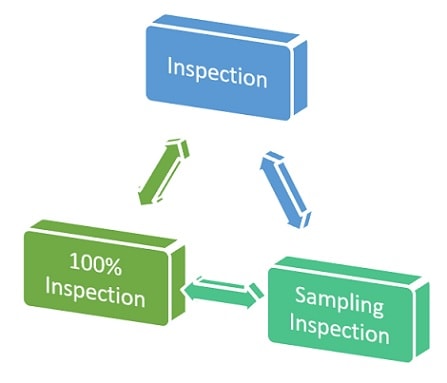

Visual Inspection Stage
Examination of exterior conditions
During the visual inspection stage, the inspector will carefully examine the exterior conditions of the property. This includes assessing the condition of the roof, gutters, siding, windows, doors, and any other exterior features. The inspector will look for signs of damage, such as cracks, leaks, or decay, and evaluate the overall condition and maintenance of these elements. Additionally, they may also check for proper drainage and the presence of any potential safety hazards.
Inspection of interior features
After assessing the exterior conditions, the inspector will move on to inspecting the interior features of the property. This includes evaluating the condition of the walls, floors, ceilings, and any other structural components. The inspector will look for signs of water damage, cracks, or any other structural issues that may be present. They will also assess the condition of the electrical, plumbing, and HVAC systems within the property’s interior.
Assessment of overall cleanliness
During the visual inspection, the inspector will also evaluate the overall cleanliness of the property. This includes assessing the level of cleanliness and hygiene in various areas, such as kitchens, bathrooms, and common spaces. The inspector will look for any signs of mold, pests, or other sanitation issues that may impact the overall cleanliness and livability of the property. This assessment helps ensure that the property is well-maintained and meets acceptable living standards.
Functional Inspection Stage
Testing of electrical systems
In this stage, the inspector will conduct functional tests on the electrical systems within the property. This includes checking the operation of light switches, outlets, circuit breakers, and other electrical components. The inspector will also assess the condition of the wiring and ensure that it meets safety standards. Electrical tests help identify any potential electrical hazards and ensure that the property is safe for occupancy.
Verification of plumbing functionality
Alongside the electrical systems, the inspector will also verify the functionality of the plumbing systems. This includes checking for leaks, assessing water pressure, and evaluating the condition of pipes, faucets, toilets, and other plumbing fixtures. The inspector will ensure that the plumbing systems are in good working order and meet applicable standards and regulations. This verification helps identify potential issues that may require repairs or maintenance.
Checking of HVAC systems
The functional inspection stage also involves checking the functionality of the property’s heating, ventilation, and air conditioning (HVAC) systems. The inspector will assess the operation and condition of the HVAC units, including furnaces, air conditioners, and ventilation systems. They will check for proper airflow, temperature regulation, and overall efficiency. This inspection helps ensure that the HVAC systems are functioning effectively and providing a comfortable indoor environment.
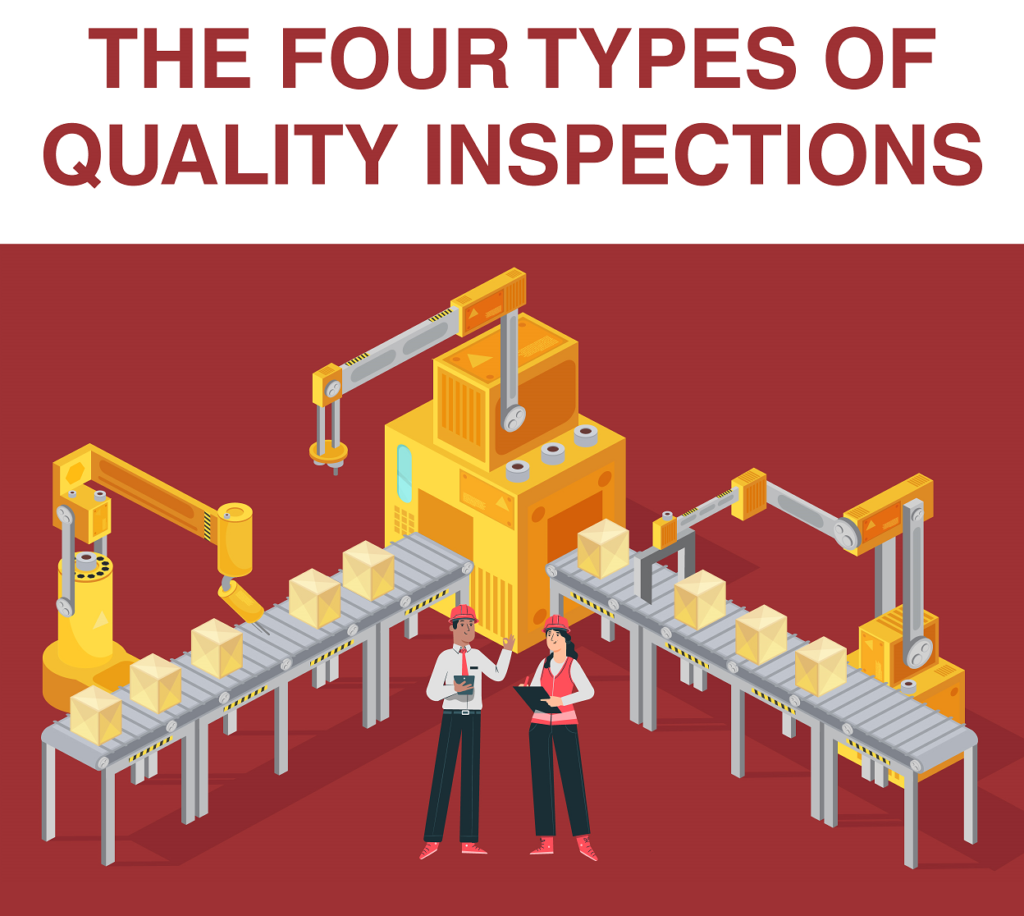

Structural Inspection Stage
Evaluation of foundation and structural integrity
One of the key areas assessed during the structural inspection stage is the foundation and overall structural integrity of the property. The inspector will examine the foundation for any signs of cracks, settlement, or shifting. They will also assess the condition of load-bearing walls, beams, and columns to ensure their stability. This evaluation helps identify any structural issues that may affect the safety and stability of the property.
Inspection of walls, floors, and ceilings
In addition to evaluating the foundation, the inspector will inspect the walls, floors, and ceilings of the property. They will look for any signs of damage, such as cracks, water stains, or sagging. The inspector will also assess the condition of insulation and soundproofing materials, if present. This inspection helps identify any structural or cosmetic issues that may require attention or repairs.
Assessment of windows and doors
The inspection of the property’s windows and doors is another important aspect of the structural inspection stage. The inspector will assess the condition, functionality, and security of windows and doors. They will check for any signs of damage, such as broken glass, faulty locks, or improper alignment. This assessment helps ensure that windows and doors provide adequate security, insulation, and ventilation.
Safety Inspection Stage
Check for fire hazards
During the safety inspection stage, the inspector will assess the property for potential fire hazards. They will check for the presence of smoke detectors, fire extinguishers, and other fire safety equipment. The inspector will also look for any signs of faulty wiring, overloaded electrical circuits, or the improper storage of flammable materials. This inspection helps ensure that the property meets fire safety regulations and minimizes the risk of fire-related incidents.
Examination of emergency exits
Another critical aspect of the safety inspection stage is the examination of emergency exits. The inspector will assess the accessibility and functionality of emergency exits, such as doors, stairwells, or windows that can be used for evacuation. They will check for any obstructions or potential hazards that may impede safe and swift evacuation in the event of an emergency. This examination ensures that the property provides appropriate means of escape in case of a fire or other emergencies.
Assessment of safety equipment
In addition to fire safety and emergency exits, the inspector will also assess other safety equipment within the property. This includes evaluating the condition and functionality of items such as handrails, guardrails, and non-slip surfaces to prevent falls or accidents. The inspector will also check for the presence of carbon monoxide detectors, security systems, and other safety measures that promote occupant well-being. This assessment helps ensure that the property meets safety standards and provides a secure environment.
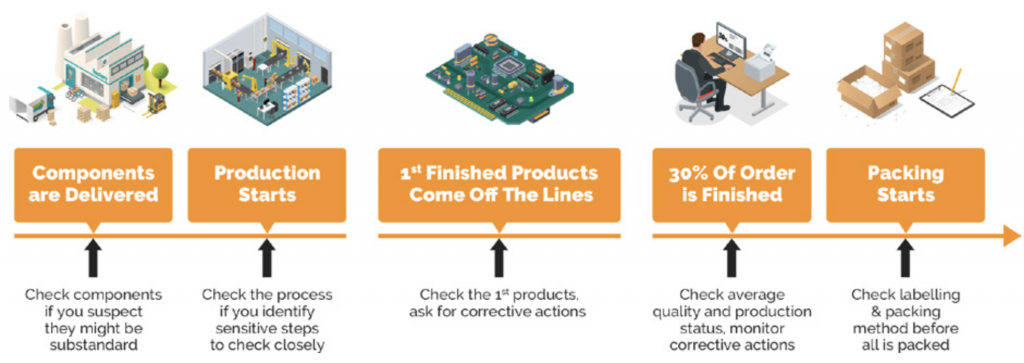

Equipment Inspection Stage
Verification of equipment functionality
During the equipment inspection stage, the inspector will verify the functionality of various equipment within the property. This may include appliances, such as stoves, refrigerators, dishwashers, or laundry machines, as well as any other equipment specific to the property type, such as elevators or swimming pool pumps. The inspector will test these equipment to ensure that they are in good working order and meet safety standards.
Evaluation of maintenance and service records
In addition to verifying functionality, the inspector will also evaluate the maintenance and service records of the equipment within the property. This includes reviewing documentation related to regular maintenance, repairs, and service contracts. By examining these records, the inspector can assess the overall care and maintenance of the equipment and identify any potential issues that may require attention or further evaluation.
Assessment of compliance with regulations
The equipment inspection stage also includes assessing the compliance of the property’s equipment with applicable regulations and industry standards. The inspector will verify that the equipment meets safety requirements, such as electrical certifications, gas certifications, or compliance with specific industry codes. This assessment helps ensure that the property meets the necessary standards and poses no hazardous risks to occupants.
Environmental Inspection Stage
Assessment of indoor air quality
During the environmental inspection stage, the inspector will assess the indoor air quality of the property. They will check for any signs of poor ventilation, excessive humidity, or the presence of harmful substances such as carbon monoxide or volatile organic compounds (VOCs). The inspector may also test for radon gas, lead paint, or other indoor pollutants that may pose health risks. This assessment helps ensure that the property provides a safe and healthy indoor environment.
Inspection for mold and asbestos
Alongside indoor air quality, the inspector will also inspect for the presence of mold or asbestos within the property. They will carefully examine areas prone to moisture, such as bathrooms or basements, for any signs of mold growth. Additionally, the inspector will assess the presence of asbestos-containing materials, such as insulation or flooring, which can pose health risks if disturbed. This inspection helps identify potential hazards and ensures compliance with regulations regarding mold and asbestos.
Evaluation of pest control measures
The final aspect of the environmental inspection stage involves evaluating the property’s pest control measures. The inspector will look for any signs of pest infestation, such as rodent droppings, termite damage, or the presence of insects. They will also assess the effectiveness of existing pest control measures, such as traps, baits, or preventive treatments. This evaluation helps ensure that the property remains free from pests that could cause damage or pose health risks.


Documentation Stage
Compilation of inspection findings
After completing the inspection, the inspector will compile all the findings and observations they have made throughout the different stages. This involves organizing the information gathered into a comprehensive report that outlines the condition of various aspects of the property. The inspector may use digital tools or software to efficiently document and categorize the findings.
Preparation of written report
Once the inspection findings are compiled, the inspector will prepare a written report summarizing their observations and recommendations. This report typically includes a detailed description of the property, a breakdown of the findings from each stage of the inspection, and any concerns or repairs that need to be addressed. The report aims to provide the client with a clear overview of the property’s condition and any necessary actions moving forward.
Inclusion of supporting photographs
To complement the written report, the inspector may include supporting photographs that provide visual evidence of the inspection findings. These photographs help illustrate any areas of concern or highlight specific issues that may be challenging to convey solely through written descriptions. Including photographs in the report enhances its clarity and allows the client to better understand the inspection findings.
Client Consultation Stage
Review of inspection results with the client
In the client consultation stage, the inspector will meet with the client to review the inspection results and discuss any findings or concerns. This review provides an opportunity for the client to ask questions, seek clarification, or request further information about the inspection findings. The inspector will take the time to explain the report in detail and address any specific areas of interest or concern raised by the client.
Discussion of identified issues
During the consultation, the inspector will engage in a discussion with the client about the identified issues found during the inspection. This may include potential safety hazards, maintenance requirements, or necessary repairs or improvements. The inspector will provide the client with insights into the severity of each issue and possible solutions or recommendations that can help address them.
Recommendations for repairs and improvements
Based on the inspection findings, the inspector will provide recommendations to the client regarding any repairs or improvements that need to be made. This may include suggestions for fixing structural issues, upgrading electrical or plumbing systems, or addressing safety concerns. The recommendations provided by the inspector aim to assist the client in making informed decisions about the property and any necessary actions required to maintain or enhance its condition.
In conclusion, the inspection process consists of several stages, each essential to thoroughly assess the condition, functionality, and safety of a property. From the pre-inspection stage, where requirements and checklists are established, to the visual, functional, structural, safety, equipment, and environmental inspection stages that cover various aspects of the property, the entire process ensures a comprehensive evaluation. The documentation and client consultation stages further enhance the inspection by organizing findings into reports, including supporting photographs, and providing clients with a clearer understanding of the inspection results. Overall, a thorough and well-executed inspection offers invaluable insights and recommendations for property owners, enabling them to address any issues, prioritize repairs or improvements, and ensure the overall safety and quality of their property.

